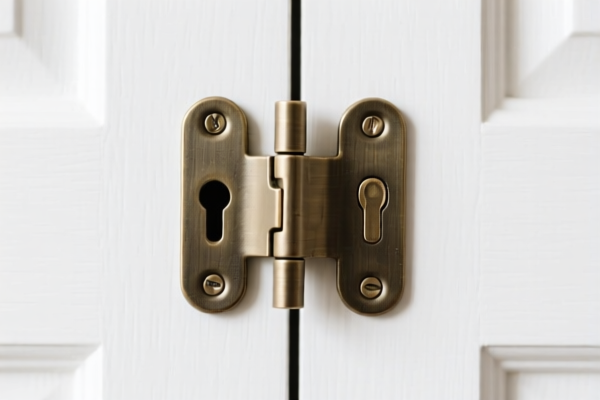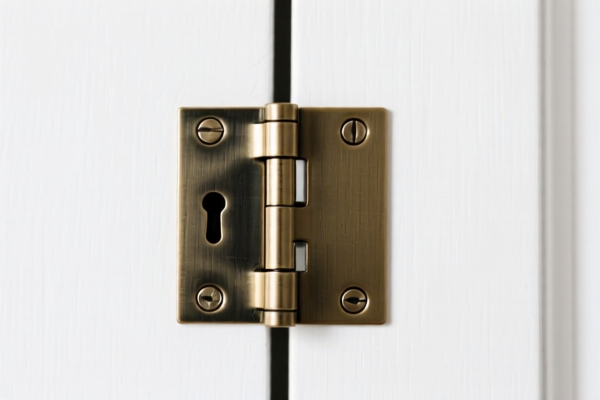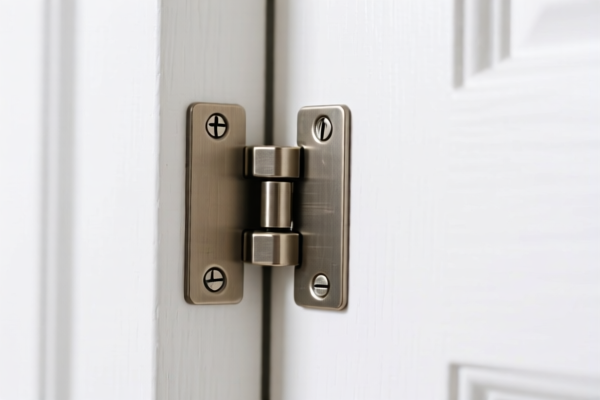| HS Code | Official Doc | Tariff Rate | Origin | Destination | Effective Date |
|---|---|---|---|---|---|
| 8302109030 | Doc | 58.4% | CN | US | 2025-05-12 |
| 8302109060 | Doc | 58.4% | CN | US | 2025-05-12 |
| 8302106090 | Doc | 108.5% | CN | US | 2025-05-12 |
| 8302106060 | Doc | 108.5% | CN | US | 2025-05-12 |
| 8302106030 | Doc | 108.5% | CN | US | 2025-05-12 |




Door Hinges
Door hinges are mechanical bearings that allow a door to rotate around a fixed axis. They are essential components in the construction of doors and frames, facilitating movement while providing structural support.
Material
Door hinges are commonly manufactured from the following materials:
- Steel: Offers high strength and durability, suitable for both interior and exterior doors. Often coated with finishes like zinc, brass, or nickel for corrosion resistance.
- Stainless Steel: Provides superior corrosion resistance, making them ideal for high-moisture environments or exterior applications.
- Brass: Offers aesthetic appeal and moderate corrosion resistance. Frequently used in decorative applications or historical restorations.
- Aluminum: Lightweight and corrosion-resistant, suitable for interior doors or applications where weight is a concern.
- Polymer/Plastic: Used in specialized applications requiring corrosion resistance and low cost, typically for lightweight interior doors.
Purpose
The primary purpose of a door hinge is to connect the door to the door frame, enabling controlled rotation for opening and closing. They also contribute to the structural integrity of the door assembly, supporting the weight of the door and maintaining alignment.
Function
Door hinges function by utilizing a pin inserted through a barrel and leaf assembly. The barrel is mortised into the door frame, while the leaf is mortised into the door itself. The pin allows for rotational movement while maintaining a secure connection between the two components. Different hinge designs offer varying degrees of adjustability and load-bearing capacity.
Usage Scenarios
- Residential Buildings: Interior and exterior doors in homes, apartments, and other dwellings.
- Commercial Buildings: Doors in offices, retail spaces, and public facilities.
- Industrial Applications: Heavy-duty doors in warehouses, factories, and other industrial settings.
- Furniture: Cabinet doors, chests, and other furniture items with hinged components.
- Automotive: Vehicle doors and other moving parts.
Common Types
- Butt Hinges: The most common type, featuring two leaves connected by a pin. Available in various sizes and finishes.
- Mortise Hinges: Similar to butt hinges, requiring a mortise (recess) in both the door and frame.
- Surface Hinges: Mounted on the surface of the door and frame, eliminating the need for mortising. Often used for specialized applications or when mortising is not feasible.
- Concealed Hinges: Hidden from view when the door is closed, providing a clean and minimalist aesthetic.
- Spring Hinges: Incorporate a spring mechanism to automatically close the door.
- Ball-Bearing Hinges: Feature ball bearings for smoother operation and reduced friction, suitable for heavy doors or high-traffic applications.
- Piano Hinges (Continuous Hinges): Long hinges that run the entire length of the door, providing increased support and stability.
- Flag Hinges: Allow for a wider opening angle and are often used for cabinet doors or folding doors.
Door hinges are mounting components used to connect doors to frames, enabling rotational movement. They are typically made of iron, steel, aluminum, or zinc and are suitable for interior and exterior doors (excluding garage, overhead, or sliding doors).
The following HS codes are relevant based on the provided reference material:
- 8302103000: This HS code falls under Chapter 83 – Base metal mountings, fittings and similar articles. Specifically, it covers hinges and parts thereof, made of iron or steel, designed for motor vehicles. The applicable tax rate is a base tariff of 2.0%, an additional tariff of 7.5%, and an additional tariff of 30.0% after April 2, 2025, for steel and aluminum products, resulting in a total tax rate of 64.5%.
- 8302106030: Also within Chapter 83, this code covers hinges and parts thereof, made of iron or steel, suitable for interior and exterior doors (except garage, overhead or sliding doors). The applicable tax rate is a base tariff of 3.5%, an additional tariff of 25.0%, and an additional tariff of 30.0% after April 2, 2025, for steel and aluminum products, resulting in a total tax rate of 83.5%.
- 7308305050: This HS code falls under Chapter 73 – Structures and parts of structures (for example, bridges and bridge sections, lock gates, towers, lattice masts, roofs, roofing frameworks, doors and windows and their frames and thresholds for doors, shutters, balustrades, pillars and columns) of iron or steel. Specifically, it covers doors, windows and their frames and thresholds for doors, and other related components. The applicable tax rate is a base tariff of 0.0%, an additional tariff of 25.0%, and an additional tariff of 30.0% after April 2, 2025, for steel and aluminum products, resulting in a total tax rate of 80.0%.
Regarding HS code 8302103000 and 8302106030, please note the additional tariff of 30.0% applicable to steel and aluminum products after April 2, 2025. The material composition of the door hinges will determine the applicable tax rate.
Customer Reviews
No reviews yet.